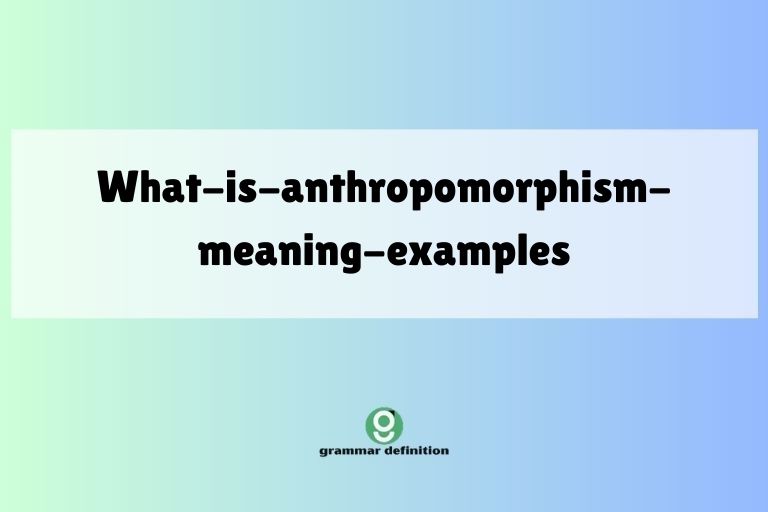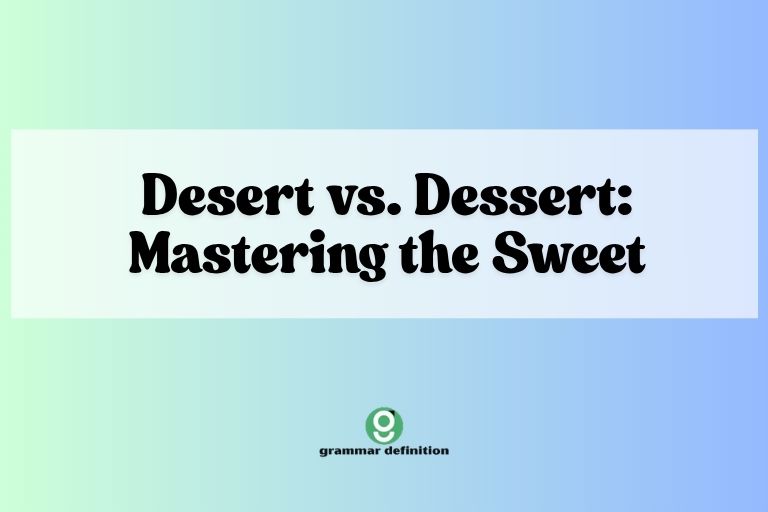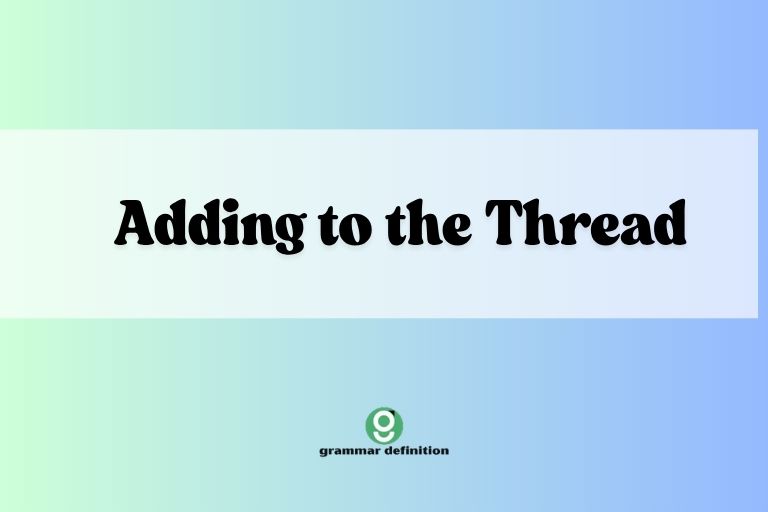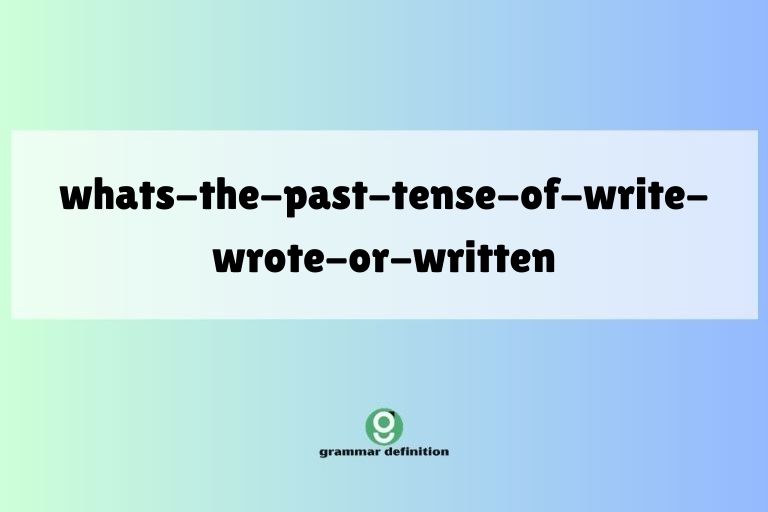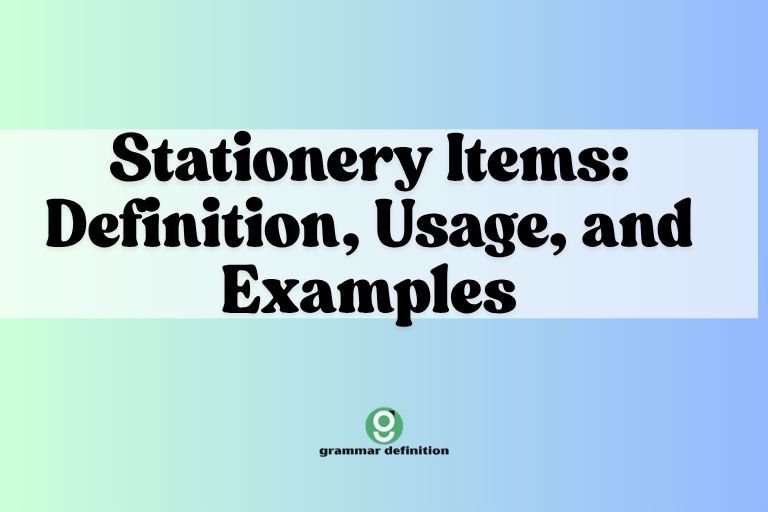Predicate Nominative: Definition, Usage, and Examples
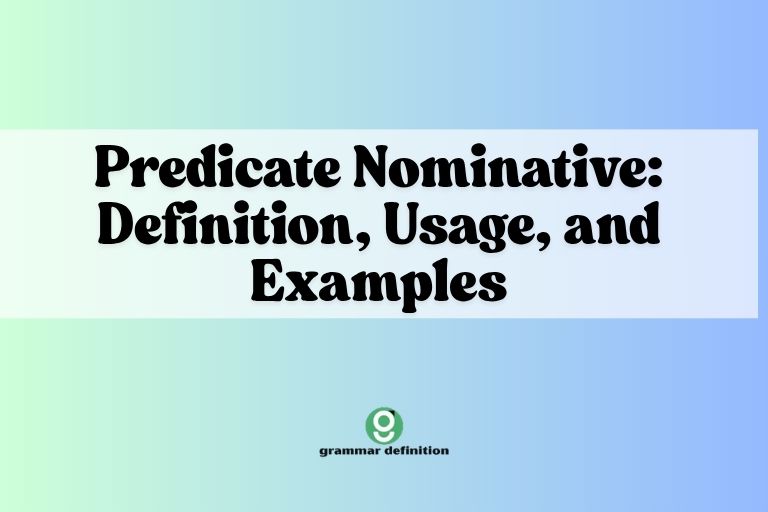
Understanding the predicate nominative is crucial for mastering sentence structure and improving your writing skills. It’s a grammatical element that often confuses English language learners, but with a clear explanation and plenty of examples, it becomes much easier to grasp.
This article will provide a comprehensive guide to predicate nominatives, covering their definition, structure, usage rules, common mistakes, and offering practice exercises to solidify your understanding. Whether you’re a student, a writer, or simply someone looking to enhance their grammar knowledge, this guide will offer valuable insights and practical tools.
The predicate nominative is a noun or pronoun that renames or identifies the subject of a sentence after a linking verb. Recognizing and using predicate nominatives correctly enhances sentence clarity and precision.
This article aims to equip you with the knowledge and skills needed to confidently identify and utilize predicate nominatives in your writing and speech. By exploring various examples and practical applications, you’ll gain a deeper understanding of this important grammatical concept.
Table of Contents
- Definition of Predicate Nominative
- Structural Breakdown
- Types and Categories of Predicate Nominatives
- Examples of Predicate Nominatives
- Usage Rules for Predicate Nominatives
- Common Mistakes with Predicate Nominatives
- Practice Exercises
- Advanced Topics: Complex Sentences and Predicate Nominatives
- Frequently Asked Questions (FAQ)
- Conclusion
Definition of Predicate Nominative
A predicate nominative (also called a subject complement) is a noun or pronoun that follows a linking verb and renames or identifies the subject of the sentence. It provides additional information about the subject, essentially stating that the subject is that noun or pronoun. The key is that the linking verb connects the subject to the predicate nominative, establishing an equivalence between the two.
Unlike a direct object, which receives the action of the verb, a predicate nominative does not receive action. Instead, it completes the meaning of the linking verb by providing a clearer understanding of the subject. Linking verbs are verbs that don’t express action but instead connect the subject to a word or phrase that describes or renames it. Common linking verbs include be (is, am, are, was, were, been, being), become, seem, appear, look, sound, smell, taste, and feel.
Predicate nominatives are always in the nominative case, which is the form of a noun or pronoun used for the subject of a verb. This is why they are called “nominative.” This contrasts with objective case pronouns, which are used for direct objects, indirect objects, and objects of prepositions.
Classification and Function
Predicate nominatives function as identifiers or renamers of the subject. They provide essential information about the subject, clarifying its identity or nature.
Without the predicate nominative, the sentence would be incomplete or lack a crucial element of meaning. They are a critical part of the predicate, which is the part of the sentence that contains the verb and provides information about the subject.
The predicate nominative is a type of subject complement. A subject complement is a word or group of words that follows a linking verb and describes or renames the subject.
A predicate adjective is another type of subject complement, but it is an adjective that describes the subject rather than a noun or pronoun that renames it. For example, in the sentence “The sky is blue,” “blue” is a predicate adjective.
Contexts in Which Predicate Nominatives Appear
Predicate nominatives are commonly found in sentences that define, classify, or identify the subject. They are used to provide essential information that clarifies the subject’s role, identity, or nature.
They appear in various contexts, including:
- Definitions: “My favorite hobby is reading.”
- Classifications: “That animal is a mammal.”
- Identifications: “The winner of the race was John.”
- Descriptions of state of being: “She became a doctor.”
Recognizing these common contexts can help you identify predicate nominatives more easily in your reading and writing. Understanding the function of linking verbs is also crucial, as they are the bridge that connects the subject and the predicate nominative.
Structural Breakdown
The basic structure of a sentence containing a predicate nominative is as follows:
Subject + Linking Verb + Predicate Nominative
The subject is the noun or pronoun that performs the action or is being described. The linking verb connects the subject to the predicate nominative, and the predicate nominative renames or identifies the subject.
Let’s break down each element:
Subject
The subject is the noun or pronoun that the sentence is about. It can be a person, place, thing, or idea.
The subject usually appears at the beginning of the sentence, but it can sometimes be found in other positions, particularly in questions or sentences with inverted word order.
Examples of subjects:
- The dog is a golden retriever.
- She is my sister.
- My dream is to travel the world.
Linking Verb
The linking verb connects the subject to the predicate nominative. It does not express action but instead links the subject to a word or phrase that describes or renames it.
Common linking verbs include:
- Forms of “to be”: is, am, are, was, were, been, being
- Sense verbs (when describing a state, not an action): look, sound, smell, taste, feel
- Other linking verbs: become, seem, appear, remain, stay, grow
Examples of linking verbs in sentences with predicate nominatives:
- The flower is a rose.
- He became a teacher.
- The music sounds beautiful.
Predicate Nominative
The predicate nominative is the noun or pronoun that follows the linking verb and renames or identifies the subject. It must be in the nominative case and provide essential information about the subject.
Examples of predicate nominatives:
- The president is Mr. Smith.
- My favorite color is blue. (Note: While “blue” is often used as an adjective, here it functions as a noun representing the color itself.)
- The winners are they.
Types and Categories of Predicate Nominatives
Predicate nominatives can be classified into different categories based on their form and function. Understanding these categories can help you identify them more easily in sentences.
Nouns as Predicate Nominatives
Nouns are the most common type of predicate nominative. They can be proper nouns (names of specific people, places, or things) or common nouns (general names of people, places, or things).
Examples of nouns as predicate nominatives:
- The capital of France is Paris. (Proper noun)
- My favorite pet is a dog. (Common noun)
- The chef is a professional. (Common noun)
Pronouns as Predicate Nominatives
Pronouns can also function as predicate nominatives. However, it’s important to use the correct case (nominative case) for pronouns in this role. Common nominative case pronouns include I, he, she, it, we, they, and who.
Examples of pronouns as predicate nominatives:
- The winner is she.
- It is I who made the mistake. (More formal)
- The best students are we.
Noun Phrases as Predicate Nominatives
A noun phrase is a group of words that functions as a noun. It can include adjectives, articles, and other modifiers that describe the noun.
Examples of noun phrases as predicate nominatives:
- My favorite book is a tale of two cities.
- The main problem is a lack of communication.
- Her greatest achievement was the completion of her PhD.
Examples of Predicate Nominatives
To further illustrate the concept of predicate nominatives, let’s look at a variety of examples organized by the type of linking verb used.
Examples with “to be” verbs (is, am, are, was, were)
The verb “to be” is the most common linking verb. Here are some examples of sentences using “to be” verbs with predicate nominatives:
The following table illustrates different uses of the predicate nominative with the verb ‘to be’.
| Sentence | Subject | Linking Verb | Predicate Nominative |
|---|---|---|---|
| The teacher is Mr. Jones. | The teacher | is | Mr. Jones |
| My favorite food is pizza. | My favorite food | is | pizza |
| The winners are they. | The winners | are | they |
| The capital of Canada is Ottawa. | The capital of Canada | is | Ottawa |
| Her dream was a successful career. | Her dream | was | a successful career |
| The problem is a lack of funding. | The problem | is | a lack of funding |
| The solution is more communication. | The solution | is | more communication |
| My best friend is Sarah. | My best friend | is | Sarah |
| The key to success is hard work. | The key to success | is | hard work |
| The movie was a complete disaster. | The movie | was | a complete disaster |
| The artist is Picasso. | The artist | is | Picasso |
| The play is Hamlet. | The play | is | Hamlet |
| The cause of the fire was arson. | The cause of the fire | was | arson |
| The answer is forty-two. | The answer | is | forty-two |
| The appointment is tomorrow. | The appointment | is | tomorrow |
| The truth is a bitter pill. | The truth | is | a bitter pill |
| The question is a matter of time. | The question | is | a matter of time |
| The hero is a firefighter. | The hero | is | a firefighter |
| The villain is a greedy businessman. | The villain | is | a greedy businessman |
| The challenge is a test of endurance. | The challenge | is | a test of endurance |
| The outcome is a surprise. | The outcome | is | a surprise |
| The result is a positive change. | The result | is | a positive change |
| The lesson is a valuable experience. | The lesson | is | a valuable experience |
| The journey is an adventure. | The journey | is | an adventure |
| The destination is a paradise. | The destination | is | a paradise |
Examples with “become”
The verb “become” indicates a change of state. Here are some examples of sentences using “become” with predicate nominatives:
The following table shows examples with the linking verb ‘become’.
| Sentence | Subject | Linking Verb | Predicate Nominative |
|---|---|---|---|
| He became a doctor. | He | became | a doctor |
| She became the CEO of the company. | She | became | the CEO of the company |
| The caterpillar became a butterfly. | The caterpillar | became | a butterfly |
| The rain became a storm. | The rain | became | a storm |
| The small stream became a raging river. | The small stream | became | a raging river |
| The student became a scholar. | The student | became | a scholar |
| The candidate became the president. | The candidate | became | the president |
| The apprentice became a master. | The apprentice | became | a master |
| The child became an adult. | The child | became | an adult |
| The amateur became a professional. | The amateur | became | a professional |
| The situation became a crisis. | The situation | became | a crisis |
| The problem became an obsession. | The problem | became | an obsession |
| The challenge became an opportunity. | The challenge | became | an opportunity |
| The rumor became a scandal. | The rumor | became | a scandal |
| The idea became a reality. | The idea | became | a reality |
| The dream became a nightmare. | The dream | became | a nightmare |
| The friendship became a romance. | The friendship | became | a romance |
| The business became a success. | The business | became | a success |
| The experiment became a failure. | The experiment | became | a failure |
| The mission became a disaster. | The mission | became | a disaster |
| The project became a burden. | The project | became | a burden |
| The game became a competition. | The game | became | a competition |
| The test became an evaluation. | The test | became | an evaluation |
| The meeting became a negotiation. | The meeting | became | a negotiation |
| The class became a discussion. | The class | became | a discussion |
Examples with “seem” and “appear”
The verbs “seem” and “appear” indicate a state of being that is perceived or evident. Here are some examples:
The following table provides examples of sentences using ‘seem’ and ‘appear’ as linking verbs.
| Sentence | Subject | Linking Verb | Predicate Nominative |
|---|---|---|---|
| He seems a nice person. | He | seems | a nice person |
| She appears the winner. | She | appears | the winner |
| The solution seems a good idea. | The solution | seems | a good idea |
| The problem appears a dead end. | The problem | appears | a dead end |
| The answer seems a mystery. | The answer | seems | a mystery |
| The forecast appears a certainty. | The forecast | appears | a certainty |
| The job seems a perfect fit. | The job | seems | a perfect fit |
| The task appears a challenge. | The task | appears | a challenge |
| The situation seems a dilemma. | The situation | seems | a dilemma |
| The experience appears a revelation. | The experience | appears | a revelation |
| The story seems a fairytale. | The story | seems | a fairytale |
| The plan appears a gamble. | The plan | appears | a gamble |
| The result seems a success. | The result | seems | a success |
| The outcome appears a failure. | The outcome | appears | a failure |
| The truth seems a lie. | The truth | seems | a lie |
| The reality appears a dream. | The reality | appears | a dream |
| The event seems a celebration. | The event | seems | a celebration |
| The meeting appears a formality. | The meeting | appears | a formality |
| The concert seems a masterpiece. | The concert | seems | a masterpiece |
| The performance appears a triumph. | The performance | appears | a triumph |
| The design seems a stroke of genius. | The design | seems | a stroke of genius |
| The invention appears a breakthrough. | The invention | appears | a breakthrough |
| The discovery seems a revelation. | The discovery | seems | a revelation |
| The solution appears a miracle. | The solution | appears | a miracle |
| The opportunity seems a godsend. | The opportunity | seems | a godsend |
Examples with Sense Verbs (look, sound, smell, taste, feel)
Sense verbs can act as linking verbs when they describe a state of being rather than an action. For example, “The music sounds beautiful” (sounds describes the music) versus “She sounds the alarm” (sounds is an action).
Here are some examples:
The table below shows examples of sense verbs functioning as linking verbs.
| Sentence | Subject | Linking Verb | Predicate Nominative |
|---|---|---|---|
| The idea sounds a plan. | The idea | sounds | a plan |
| The music sounds a symphony. | The music | sounds | a symphony |
| The performance sounds a masterpiece. | The performance | sounds | a masterpiece |
| The recipe tastes a success. | The recipe | tastes | a success |
| The food tastes a delight. | The food | tastes | a delight |
| The dish tastes an innovation. | The dish | tastes | an innovation |
| The fabric feels a luxury. | The fabric | feels | a luxury |
| The blanket feels a comfort. | The blanket | feels | a comfort |
| The texture feels a dream. | The texture | feels | a dream |
| The garden smells a paradise. | The garden | smells | a paradise |
| The flower smells a fragrance. | The flower | smells | a fragrance |
| The air smells a freshness. | The air | smells | a freshness |
| The design looks a marvel. | The design | looks | a marvel |
| The painting looks a masterpiece. | The painting | looks | a masterpiece |
| The view looks a dream. | The view | looks | a dream |
| The explanation sounds a solution. | The explanation | sounds | a solution |
| The story sounds a legend. | The story | sounds | a legend |
| The report sounds a warning. | The report | sounds | a warning |
| The cake tastes a celebration. | The cake | tastes | a celebration |
| The drink tastes a refreshment. | The drink | tastes | a refreshment |
| The material feels a treasure. | The material | feels | a treasure |
| The atmosphere feels a celebration. | The atmosphere | feels | a celebration |
| The perfume smells a secret. | The perfume | smells | a secret |
| The landscape looks a painting. | The landscape | looks | a painting |
| The structure looks a fortress. | The structure | looks | a fortress |
Usage Rules for Predicate Nominatives
There are several rules to follow when using predicate nominatives to ensure grammatical correctness and clarity.
Rule 1: Use the Nominative Case
The predicate nominative must always be in the nominative case. This means using the correct form of the pronoun (I, he, she, it, we, they, who) rather than the objective case (me, him, her, it, us, them, whom).
Correct: The winner is she.
Incorrect: The winner is her.
Rule 2: Linking Verb Agreement
The linking verb must agree in number with the subject. If the subject is singular, the verb must be singular.
If the subject is plural, the verb must be plural.
Correct: The problem is a lack of resources.
Correct: The problems are a lack of resources and poor management.
Rule 3: Clarity
Ensure that the predicate nominative clearly renames or identifies the subject. The relationship between the subject and the predicate nominative should be clear and unambiguous.
Clear: My favorite sport is tennis.
Unclear: It is tennis. (Without context, “it” is ambiguous.)
Rule 4: Formal vs. Informal Usage
In formal writing, it is generally preferred to use the nominative case pronoun after a linking verb, even if it sounds slightly awkward in casual conversation. For example, “It is I” is grammatically correct but sounds formal.
In informal conversation, “It’s me” is more common.
Formal: It is I who am responsible.
Informal: It’s me who is responsible.
Common Mistakes with Predicate Nominatives
One of the most common mistakes is using the objective case pronoun instead of the nominative case pronoun. Another common error involves subject-verb agreement.
Mistake 1: Using Objective Case Pronouns
Using objective case pronouns (me, him, her, us, them, whom) instead of nominative case pronouns (I, he, she, we, they, who) is a frequent error.
Incorrect: The best player is him.
Correct: The best player is he.
Mistake 2: Subject-Verb Agreement Errors
Failing to make the linking verb agree with the subject in number is another common mistake.
Incorrect: The problems is a lack of communication.
Correct: The problems are a lack of communication.
Mistake 3: Unclear Reference
Using a predicate nominative that does not clearly rename or identify the subject can create confusion.
Unclear: It is a problem.
Clear: The main issue is a lack of funding.
Practice Exercises
Test your understanding of predicate nominatives with these exercises.
Exercise 1: Identify the Predicate Nominative
Identify the predicate nominative in each of the following sentences.
The following table contains practice sentences where you must identify the predicate nominative.
| Sentence | Predicate Nominative |
|---|---|
| The capital of Italy is Rome. | Rome |
| My favorite author is Jane Austen. | Jane Austen |
| The winners are they. | they |
| Her ambition is a successful career. | a successful career |
| The solution is more communication. | more communication |
| The best student is she. | she |
| The problem is procrastination. | procrastination |
| The answer is perseverance. | perseverance |
| His goal is financial independence. | financial independence |
| The result was a complete surprise. | a complete surprise |
Exercise 2: Fill in the Blank
Complete each sentence with an appropriate predicate nominative.
Complete the sentences in the following table with a fitting predicate nominative.
| Sentence | Possible Answer |
|---|---|
| The teacher is __________. | Mrs. Smith |
| My favorite subject is __________. | History |
| The winners could be __________. | us |
| The problem seems to be __________. | a lack of funding |
| The solution might be __________. | more research |
| The best approach is __________. | collaboration |
| The biggest challenge is __________. | time management |
| The key to success is __________. | hard work |
| My dream is to become __________. | a doctor |
| The journey became __________. | an adventure |
Exercise 3: Correct the Error
Identify and correct the error in each of the following sentences.
Identify and correct the errors related to predicate nominatives in the sentences below.
| Incorrect Sentence | Corrected Sentence | Explanation |
|---|---|---|
| The winner is her. | The winner is she. | Use the nominative case pronoun. |
| The problems is a lack of funding. | The problems are a lack of funding. | Subject-verb agreement. |
| It was me who called. | It was I who called. | Formal usage requires nominative case. |
| The best student is them. | The best student is they. | Use the nominative case pronoun. |
| The solution are simple. | The solution is simple. | Subject-verb agreement. |
| The reason for the delay are unknown. | The reason for the delay is unknown. | Subject-verb agreement. |
| The cause of the problem were a faulty wire. | The cause of the problem was a faulty wire. | Subject-verb agreement. |
| The outcome of the election were unexpected. | The outcome of the election was unexpected. | Subject-verb agreement. |
| The most important thing are honesty. | The most important thing is honesty. | Subject-verb agreement. |
| The focus of the meeting were the budget. | The focus of the meeting was the budget. | Subject-verb agreement. |
Advanced Topics: Complex Sentences and Predicate Nominatives
Predicate nominatives can also appear in more complex sentence structures, such as those involving subordinate clauses and compound subjects. Understanding how they function in
complex sentences requires a deeper grasp of grammatical relationships.
Subordinate Clauses as Predicate Nominatives
Sometimes, an entire subordinate clause can function as a predicate nominative. A subordinate clause is a group of words that contains a subject and a verb but cannot stand alone as a sentence.
When a subordinate clause acts as a predicate nominative, it renames or identifies the subject of the main clause.
Example: The question is whether we can afford it.
In this sentence, “whether we can afford it” is a subordinate clause that serves as the predicate nominative, renaming the subject “the question.”
Predicate Nominatives with Compound Subjects
When a sentence has a compound subject (two or more subjects joined by a conjunction), the predicate nominative must agree in number with the compound subject. If the compound subject is plural, the predicate nominative must also be plural.
Example: John and Mary are the candidates.
Here, “John and Mary” is a compound subject, and “candidates” is a plural predicate nominative that agrees with the plural subject.
Sentences with Inverted Structure
In some sentences, the subject may follow the verb, creating an inverted structure. In these cases, it’s important to correctly identify the subject to ensure that the predicate nominative agrees with it.
Example: There is the problem.
In this sentence, “problem” is the subject, and “is” is the linking verb. Even though the subject follows the verb, “problem” is still what the sentence is about, and a predicate nominative would have to agree with it.
Frequently Asked Questions (FAQ)
Here are some frequently asked questions about predicate nominatives.
What is the difference between a predicate nominative and a direct object?
What is the difference between a predicate nominative and a direct object?
A predicate nominative renames or identifies the subject of a sentence after a linking verb, while a direct object receives the action of the verb. A predicate nominative follows a linking verb, while a direct object follows an action verb.
Example of Predicate Nominative: John is a teacher.
Example of Direct Object: John teaches math.
How can I identify a linking verb?
How can I identify a linking verb?
Linking verbs connect the subject to a word or phrase that describes or renames it. Common linking verbs include forms of “to be” (is, am, are, was, were), sense verbs (look, sound, smell, taste, feel), and other verbs like become, seem, and appear.
If you can replace the verb with “is” or “equals” and the sentence still makes sense, it’s likely a linking verb.
Does a predicate nominative have to be a single word?
Does a predicate nominative have to be a single word?
No, a predicate nominative can be a single word, a phrase, or even a clause, as long as it functions as a noun and renames or identifies the subject.
Example: My favorite book is a tale of two cities. (Phrase)
Example: The question is whether we can afford it. (Clause)
Is a predicate nominative the same as a subject complement?
Is a predicate nominative the same as a subject complement?
A predicate nominative is a type of subject complement. A subject complement is any word or group of words that follows a linking verb and describes or renames the subject.
A predicate nominative is specifically a noun or pronoun that renames the subject, while a predicate adjective is an adjective that describes the subject.
Why is it important to use the correct case for pronouns as predicate nominatives?
Why is it important to use the correct case for pronouns as predicate nominatives?
Using the correct case (nominative case) for pronouns as predicate nominatives ensures grammatical correctness and clarity. Using the objective case instead can create confusion and make the sentence grammatically incorrect.
Conclusion
Understanding predicate nominatives is essential for mastering English grammar and improving your writing skills. By recognizing their structure, function, and usage rules, you can enhance the clarity and precision of your sentences.
This guide has provided a comprehensive overview of predicate nominatives, covering their definition, structural breakdown, types, examples, usage rules, common mistakes, and practice exercises. With this knowledge, you can confidently identify and use predicate nominatives in your writing and speech, leading to more effective communication.

